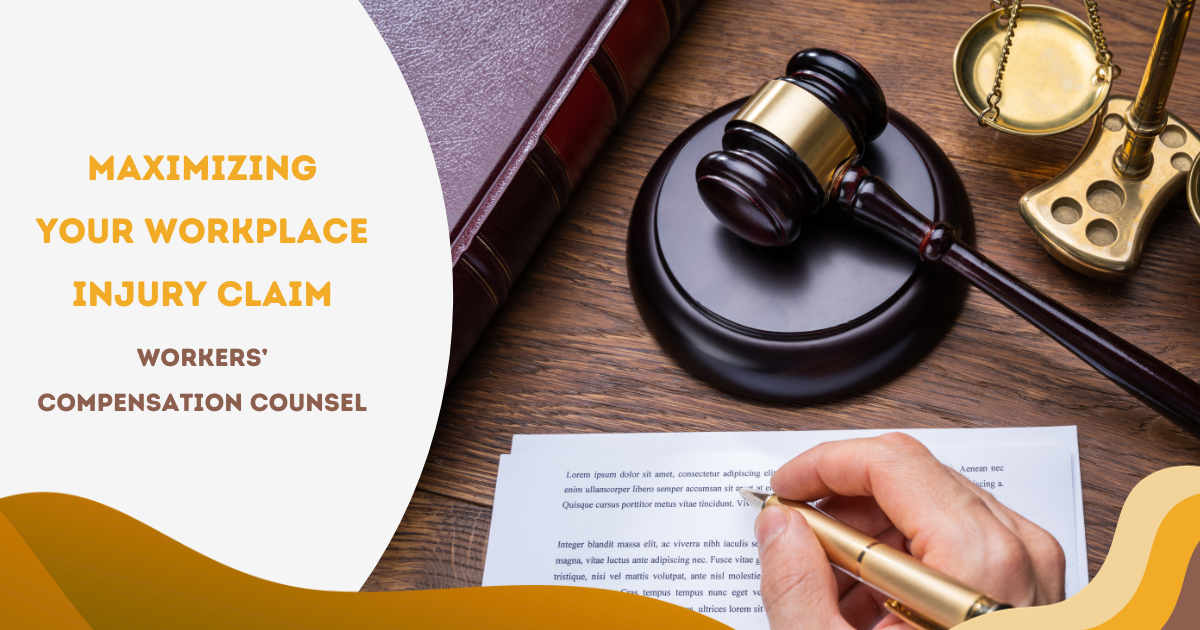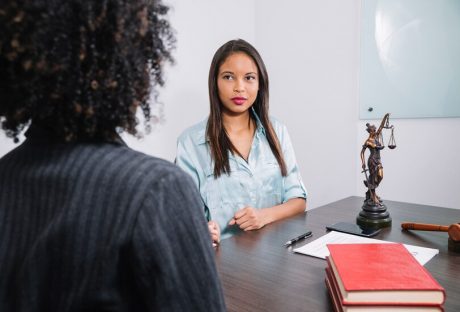Suffering an injury at work can initiate a challenging battle for fair compensation. The laws on workplace injury are complicated. Employers and insurance companies often try to push back against claims. This complexity often necessitates the expertise of a lawyer well-versed in the relevant laws.
They can stand up to employers who don’t want to pay. These professionals can secure the rightful compensation an individual deserves following a workplace accident. Individuals who sustain injuries should not navigate this process alone. It is advisable to reach out to an experienced workplace injury attorney.
In this article, we will explore the most effective approach to handling workplace injuries.
Contents
I. The Strategic Advantage of Workers’ Compensation Counsel
Injured workers who have lawyers get paid five times more. This shows the big benefit of hiring a workers’ compensation attorney. With their help, even average settlements are around $20,000, says the Bureau of Labor.
How can lawyers significantly impact complex claims? They know all the specific state laws. They use this to structure claims to get the most money. Lawyers find ways to get extra benefits. They avoid technical issues that could cause denials. Since lawyers know the process, they speed up approvals and stop problems early. Regardless of whether you consult workers’ compensation lawyers in Los Angeles or New York, having an expert on your side significantly increases your chances of securing a favorable outcome.
The attorney also advises on the long-term impact of injuries on income. They factor in all losses beyond just medical and missed wages to get full pay. Without this big-picture view, you might settle for too little leaving out future issues.
II. Claiming Full Benefits: The Lawyer’s Playbook
While the financial prospects with a lawyer seem promising, they do not come unchallenged. Employers and insurers, armed with their own legal teams, are prepared against counterclaims.
This highlights the crucial role of your legal counsel in countering resistance from employers and insurers. In such scenarios, lacking proper legal representation could be the difference between a denied claim and a fair settlement.
Seasoned attorneys use proven tactics to secure comprehensive coverage of medical expenses and lost income. They obtain medical evidence demonstrating the extent of disability, proving that injuries arose from work duties. Lawyers also calculate lost wages accurately, accounting for overtime, bonuses, commissions, and benefits.
Another avenue attorneys pursue is to classify injuries as occurring cumulatively over time. This triggers additional coverage under “occupational disease” provisions. Evidence must establish that workplace exposures, rather than non-work-related factors, directly led to the condition.
It takes skill to overcome employer resistance. Lawyers know the rules to challenge unfair denials and offers. If employers say the injury didn’t happen at work, attorneys prove otherwise. They gather witness statements and evidence of unsafe conditions. Lawyers also disprove false claims that misconduct caused the accident.
III. Countering Employer and Insurer Pushback
Navigating through the resistance of employers and insurers is a nuanced battle, often requiring an attorney’s intervention. With intimate knowledge of claim regulations, lawyers challenge improper denials and suspensions. They also counter unacceptable settlement offers using evidence and legal arguments.
If employers contest that injuries did not occur on the job, attorneys marshal facts proving otherwise. This may involve gathering witness statements, employment records, and evidence of unsafe conditions. Lawyers also rebut allegations that misconduct like intoxication or horseplay caused accidents.
When insurers refuse medical treatments, attorneys file appeals and present medical justification. If employers wrongly claim preexisting conditions are to blame, lawyers compel evidence disproving this. Insurers denying occupational disease claims face demands to accept physician diagnoses confirming work-related causation.
IV. Settlement Negotiations: The Art of the Deal

With attorney fees typically ranging from 10% to 20% of the settlement, we now turn to the art of the deal. Here, the attorney’s expertise and financial incentive align to pursue the highest settlement possible, a win-win for the attorney and client alike.
Negotiating settlements is a complex process. Attorneys carefully consider all present and future damages. This includes treatments needed, impact on earnings and earning capacity, disability ratings, vocational rehabilitation costs, and estimated life expectancy.
Counsel also considers leverage points. Evidence solidly proving liability strengthens demands. Poor safety procedures, previous OSHA citations, and other incidents demonstrate negligence. Lawyers also assess insurers’ appetite to avoid litigation, which entails public exposure and the risk of paying more.
Ultimately, your attorney’s goal is to secure a settlement that truly compensates you, based on medical assessments rather than arbitrary formulas. If initial offers fall short, determined counsel will pursue maximum recovery through hearings or court proceedings.
Understanding settlement money dynamics gives insight into your lawyer’s moves. But you likely still have questions. Below we address common injured worker questions to demystify the process and show the big impact of hiring an attorney.
How can a workers’ compensation attorney influence the outcome of my claim?
Lawyers use expertise to maximize benefits under the law and proof. They stop rule violations by employers and insurers that could void rights. Counsel also balances against experienced opposing legal teams aiming to limit payouts.
What steps should I take if my employer disputes my injury claim?
Contact a lawyer right away. Disputes often lead to denied claims without fast help. Lawyers respond strongly with irrefutable proof of job-related injuries. This makes employers back down from baseless objections.
How do workers’ compensation attorneys negotiate higher settlements?
Attorneys negotiate vigorously by substantiating long-term income loss, substantial medical requirements, and liability for negligence. Big potential jury verdicts create leverage. Counsel also shows a readiness to go to court if required, driving fair settlements.
Key Takeaway
Hiring an experienced workers’ compensation lawyer levels the playing field when filing your claim. Their know-how with complex laws helps overcome employer resistance to get you maximum benefits. With a strategic attorney partner, you can focus fully on getting better. Your lawyer handles all the legal complexities for you.
Don’t leave any money on the table. Call a trusted local workers’ compensation attorney in your area today. Discuss your unique situation and options. An attorney will advise if they can help get more benefits.
Having an exceptional lawyer on your side can make all the difference in ensuring you receive proper compensation. Don’t delay – you deserve full and fair compensation. Schedule a free consultation with a workers’ compensation attorney today.
Read Also:























